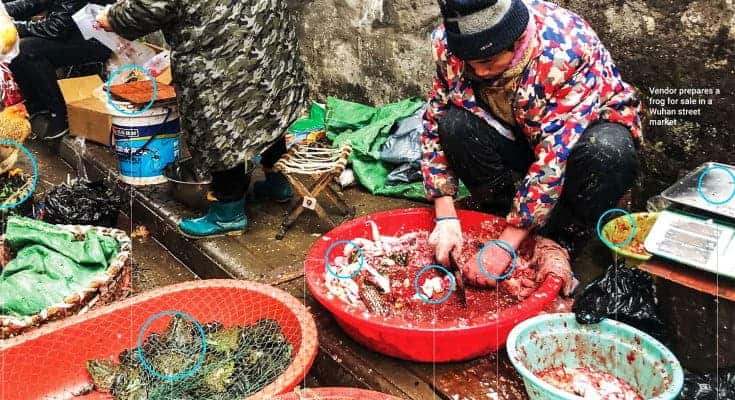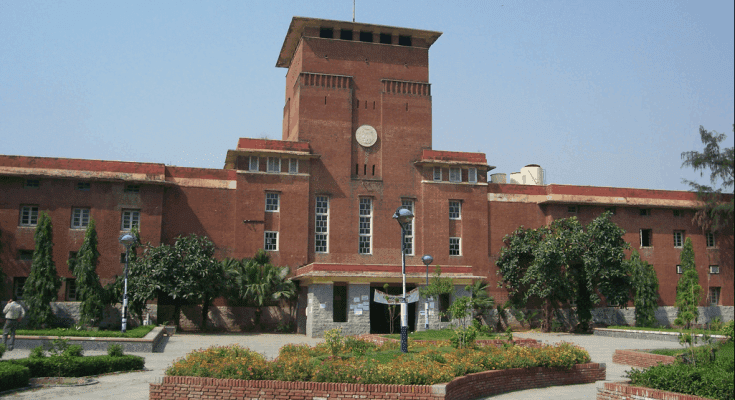This piece provides a detailed analysis of the current COVID-19 pandemic on the dynamic global economy.
A hub of all humans across the world performing various operations forms a global economy. Trade all overseas ignoring boundaries has given rise to world trade and commercial connections which collectively builds the world economy or global economy. A widely used saying of the past, a famous phrase, “When America sneezes the whole world catches a cold” it signifies the dominant role of America in global economics since the beginning of the twentieth century. On the other hand, China being a large country with the highest population is the manufacturing house for rest of the world, therefore, the same phrase, (“When China sneezes the whole world catches a cold”) is popularly used to reflect China’s power and authority in global matters. And hence both countries being developed has a prominent role to play in the global race to maintain and flourish the system of global economics. Any fluctuations to their stock market indices and import-export structures send a chill wind across many economies and have a significant impact on global economic activity. In 2018, the United States gauged for 15.2 per cent of global gross domestic product (GDP) after adjusting for purchasing power parity (PPP). Also considering another tycoon of global economics, China is the world’s second-largest economy and produces 18.69 per cent of global gross domestic product (GDP) adjusted for purchasing power parity for 2018. China’s exports tremendously grew by 16 per cent per year from 1979 to 2009 which was a good sign of growth for the country and the world.
The global economy is already in its state of synchronised slowdown which particularly means the growth rate is falling to its lowest i.e. 3 per cent in 2019 and downgrading growth as stated by the International Monetary fund. The sparge effects of global crisis 2008 can still be traced out and since then the global economy is at its slowest pace. Around the globe almost 90 per cent of countries to experience the slowest growth in this decade thus this reflects a complex situation for all the nations. Since it is being observed over the past decade that global trade growth is in a halt situation. This horrified fall was rooted in various inter-related macroeconomic factors chiefly inflation, rising interest rates, trade relations, geo-political issues and availability of natural resources. Peeping back to China, a tremendous fall in birth rates, ageing population at hotfoot, screwing Federal Reserve, put brakes on China’s economy. To this, there is an addition of fuel to fire in china, and affecting the world and economy as a whole. As we already know that a health epidemic is one of the most dangerous threats that a nation could ever face. And this time China is burning with a menacing virus and this is the real threat of COVID-19 epidemic that has originated itself in China. The dark mystery behind its cure is hasn’t solved yet. When we heard a term called viruses we became preventive and protective automatically and even when we have proper medication for the same. But the fear of viruses takes all our research and trusts. Now this time China is bearing the pain. COVID-19 is the inclusion of one more fatal virus to the family of health toll. Viruses being untreatable are deathly, so it is of great concern if a person is suffering from the common cold because it is not also 100 per cent curable.
How people react to normal viruses causing the common cold, Influenza ? We all generally describe them as disease-causing pathogenic particles of DNA (deoxyribonucleic acid) or RNA (Ribonucleic acid). We are not afraid of other diseases because they have medicinal cures and gives us psychological and biological support. Recently a dangerous outbreak of COVID-19 in China has added to the books of medical sciences and research to diagnose and set another side to human life. At this hour the world has to deal with something non-curable.
COVID-19 being a large family of viruses causing common cold to more severe diseases as Middle East Respiratory Syndrome (MERS-CoV) and Severe Acute Respiratory Syndrome (SARS-CoV). The dark mystery behind its cure is still covered by curtains of the nonidentifiable source. Scientists are rushing to crack but too much devastation has already raised the toll of human life. Till now ant-eating Pangolins are considered to be the prime suspect according to the basis of genetic analyses. Being originated in the Wuhan city of china it can only be traced there. Being zoonotic they are transmitted between animals and people easily. The only way is to take preventive steps. Common signs involve respiratory symptoms, fever load, cold, breathing problems. Influenza an already curable disease which is generally known to us but still we are not afraid of it and also it is not affecting the global economy so drastically unlike coronavirus. Hundreds of thousands of people die of the flu every year, a rate lower than coronavirus. Globally, about 3.4% of reported COVID-19 cases have died as on March 3′ 2020. On the other hand, in comparison to seasonal flu which generally kills far fewer than 1% of those infected as stated by WHO (World Health Organisation). A mortality rate in China as of Feb 4 is 2.1% nationwide, and 5.8% in Wuhan as reported by NPA, China. But still their lies some important distinctions between coronavirus and influenza because of which economy is suffering so hard. Because there is no vaccine for COVID-19 and it could take many months or years to get one to market. The only thing is that Influenza has likely been around for more than 2,000 years with us thus not drastically affecting economy and humanity contrary Coronavirus a 3 months old virus, yet there is no vaccine. Typically people develop more natural defences to fight against an already existing virus for more than a thousand years. Therefore not that destructive now but seasonal flu also caused variations to economy long way time back.
China death toll is although rising day by day. It has taken a different picture in china and harming their most important resource that is humans. This virus outbreak is not only affecting people but also has a ruinous impact on the whole world since everything is connected to China. Economies are interlinked and thus deeply impacting other nations in terms of the death toll and industrial businesses as well. Though America is taking mist of the hardships in research and finding the cure for this destructive virus. Nations across the world have bound into action to contain the impact of this epidemic. China is the epicentre is barricading its major cities and public places. This vicious circle of the instant spread of the virus is ruing other nations as well and it has already taken a toll of 100,300 infected people. Mainland China has seen more than 3000 deaths. The novel coronavirus is spreading faster, various warnings are given by The World Health Organisation to countries like Iran and Italy. India has also reported with 31 COVID-19 positive cases in this period. Italy is shutting down schools and taking proper preventive measures. America is boarding hard and hasten research efforts to find a cure. Various measures have been announced by different nations to address this issue. Despite everything related to this virus will enter our shore on a large scale or not but it is impacting global as well as national economies. As stated by international bodies, World Bank and organization for economic cooperation and development has already marked a sharp slowdown in global economic growth. China’s economy can even contract, which, if happens would be the first time since the revolution of the 1970s. This will surely impact India’s economic situation too. The global supply chain has also been disturbed due to export and import sprung from china affecting millions of small and medium businesses in developing countries. COVID-19 crisis can further slowdown world growth also drastically affects India’s GDP growth by half to one per cent, other things being constant. This health shock will make the world situation worse. China being the main house of imports and exports crashes the world trade. Financial markets were in improvement condition before novel coronavirus spread to the world but now financial markets and economic forecasters are stating warnings for risks in the US and across the world. China’s economic growth is expected to slow to 4.5 per cent in the first quarter of the 2020 year as reported by the world economic forum. Global oil demand has also hit hard by novel coronavirus says international energy agency. Also, the Islamic countries such as Iran, Israel which has closed its land borders with Egypt and Syria, Kuwait have banned their flights and ordered the airline industry to eliminate every flight for a certain period. Not surprisingly, Air India is to shut down its flights. And all this has accounted to a total loss of $113 billion of revenue. Massive factory shutdown, offices and workplaces closure has a slowing flow of products from and to China. This is largely affecting companies across the world including Apple and Nissan. As the world struggles with the novel coronavirus, impact on the economy is increasing its peak as the virus presents the biggest danger to the global economy since after a financial crisis. As mentioned earlier there are now more than 95000 confirmed cases globally. In China millions of people are locked down in dozens of cities, disruptive supply chains and travel restrictions have to lead to a great slowdown.
After so much of technologies china is not able to find a cure for this virus, it was transferred from animals to humans. There are a lot of antibiotics injected to animals to slaughter them all this has given rise to novel coronavirus. Not being able to crack the antidote the world is suffering financially, economically and most important rising deaths. There are many countries and companies dependent on the health of china’s economy and thus they are also suffering the same pain. China is the world’s largest oil importer observed a descending global oil demand in a decade. It is expected to fall by 435,000 barrels a year to year in the first quarter of 2020 said by IEA. Second affected industry due to the novel coronavirus is the air travel industry. To restrict the spread of the virus among nations cross nationals flights are cancelled since it is respirational infection. As reported by the International Air Transport Association (IATA) the outbreak could cost airlines $113 billion in lost revenue (predicted figure). Due to this outbreak, lots of airlines got trapped in a very bad situation and taken a toll on their revenue, since earlier also some were only earning marginal profits and due to this health hazard that is also being ruined. The third and the most affected portion of the world economy is disruptive commerce due to divisive virus which had landed world trade to an upsetting situation. The pharmaceutical industry is also bracing for disruption to global production. Largely America is the main place of suffering as pharmaceutical industries got major losses due to this harmful outbreak and have resulted in a dampening effect over the graph of profits and revenues. Being Americans increasingly dependent on drugs catches a high amount of imports from China. Most drugs are either sourced directly from China or are made from intermediate chemical progenitors, manufactured in China. 80 per cent of medicated drugs of the U.S. are sourced overseas particularly china. And in the past few years, the pharmaceutical industry has immensely geared up on a large scale concluding China as the biggest producer of API’s (Active pharmaceutical ingredients). Not the only U.S many other countries are also dependent on China, including India. India is the largest producer of generic drugs also relies on China for 80 per cent of its API’s supply that is to be used further in drug production. Almost all antibiotics are imported from China to the US even surgical gowns, gloves, masks and products used to stop the spread of coronavirus are also manufactured in China. Since there is massive destruction of the manufacturing sector in China has set back its supply of drugs which is substantially effecting the pharmaceutical industry globally. As reported by FDA (Food Drug Administration) there will be a shortage of API’s globally which is required in the production of various other drugs and can cause higher prices for the medicines people(particularly in the US) need to treat their illnesses due to dismantled manufacturing in China. Indian pharmaceutical sector is drastically impacted and according to the data stated by Pharmaceutical Export Promotion Council, the trading cost of paracetamol has increased from Rs 250-300 kg to 400-450 kg. Along with this, another shock which is nondigested by the industries is a shot up of 40-50 per cent increase in prices of vitamins and penicillin. Pharmaceutical industries will face this prospect of disruptions due to the extended shutdown of factories in china. Major drugmakers including Dr Reddy’s, Lupin, Glenmark, Mylan, Zydus healthcare are mostly affected even the stock market Sensex is affected.
In China, this virus will remain for a longer time particularly until an antidote is discovered. All this is due to seasonal changes there which support a rigorous spread of coronavirus being respirational. China is presently experiencing a raining season which has worsened the existing situation more badly. The worst slap to the economy is when there is a shallow single-day fall for Sensex globally. This landed economists back to great concern over the economic impact of the COVID-19 outbreak. The Sensex lost gigantic 1,941.67 points or 5.17% to close at 35,634.95 ending a day with huge losses. Global stock markets dived deeply as a blow of investors were recorded who were pressured due to the recent spread of coronavirus.
Besides the impact on commerce, the UN’s International Civil Aviation Organization (ICAO) forecasts that Japan could lose $1.29 billion of tourism revenue as there is a huge fall in Chinese travellers, while Thailand could lose $1.15 billion. There is a serious downtrodden effect in oil sector globally, and sinking oil prices have been traced and had a reverse in all the improvements and positive momentum in oil prices over a small period. Continued losses would be suffered by oil industries in two ways firstly due to travel restrictions which ended up in limiting the use of jet fuel and supply chains slowdown. Secondly, passive industrial activities due to fewer workers and stock market reaction to the effect of the coronavirus on the global economy build a forecast of global oil demand over a long period. Since the sentiment of health has affected the global economy in a negative sphere. So estimations about the global oil demand curve can be graphed as oil prices slump. Also, Russia denied OPEC’s proposal for a production cut and subsequent oil price war which has already pushed Brent blend crude down to more than 9 per cent.
Due to the mammoth shutdown of factories in China has caused a steep fall in car sales by 92 per cent within 15 days of an outbreak, as stated by the China Passenger Car Association (CPCA). Various other large companies have suffered a lot because a major amount of automobile parts are produced in China only and its reduced production has badly toll on automobile sector globally. China is the world’s biggest car market, and Wuhan being the epicentre for the same is also known as “motor city” for the world as it serves as a house to auto plants including General Motors, Honda, Nissan, Peugeot Group and Renault. Wuhan solely deems for about 50% of the total production of auto-parts and main factories, assembling for Honda alone. This landed the sector to a very dreadful state. Tesla a Hubei brand which has a new factory set up in Shanghai was also forced to shut down, and Volkswagen too postponed production at all of its Chinese plants. Reducing the overall supply and disturbing the global market for automobiles as the impacts on the auto industry are being felt beyond China’s borders. It badly touched India’s shore. Hyundai, Honda, and various other companies in India are dependent on China for minor to major auto-parts and imports them on a large scale, this shutdown will collapse the market and ruin the increasing path of growth. Also, Hyundai and Kia recently ceased their several assembly lines in Korea and a suspension of auto production by Nissan in Japan. To prevent the spread of the virus which has sharply ruined the automobiles all over the world these decisions were to amended. And due to low production and almost zero supply resulted in the shutdown of operations in other nations as well.
However, the economists were optimistic China’s economy would recover quickly if the virus could be contained.
Feature Image Credits: Akshat Arora for DU Beat.
Rushali Yadav
[email protected]




